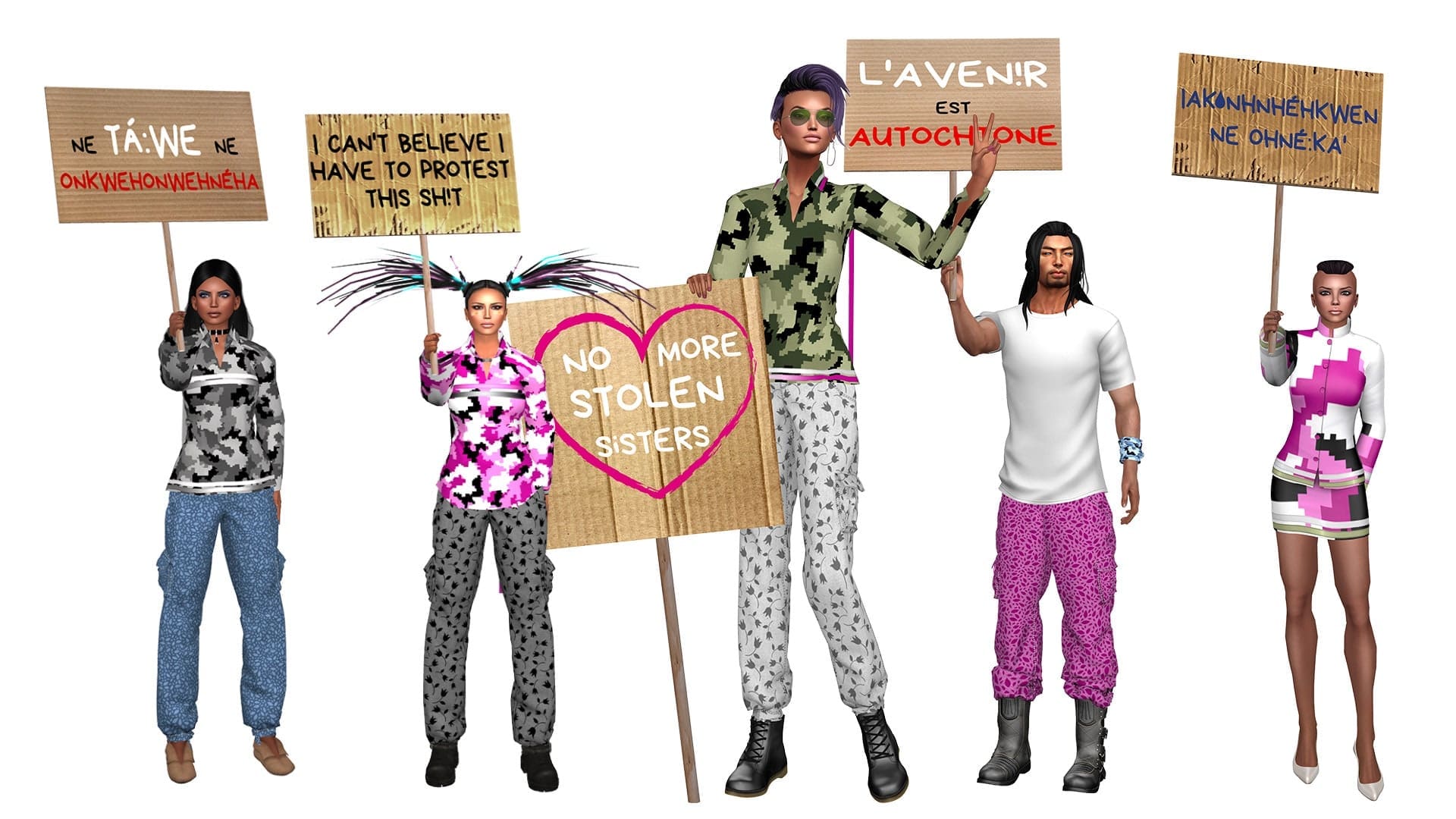The Santa Fe Indian Market had gone digital this year. Traditionally, the annual festival features Indigenous artists from across North America gathered in New Mexico to market their original creations through hundreds of stands. Although the schedule looked new this summer, it was still a great spot to explore.
The schedule, scattered over the month of August, featured everything from a shoppable online store where shoppers could find authentic indigenous products, to a virtual fashion show showcasing works by seven indigenous artists, including veteran Diné designer Orlando Dugi.
The designers mixed traditional art with contemporary finishes during last week’s immersive fashion show, all of which questioned the concept of what indigenous architecture should be. Particularly one artist stuck out from the lineup: Skawennati, a Montreal-based Mohawk artist, Canada. Originally from Kahnawake, Mohawk district, Skawennati created her multimedia art for over 18 years. She is best known for her virtual works, comprising of futuristic digital worlds, videos, and avatars with an unexpected indigenous twist, styling her characters in traditional garments including ribbon shirts and more. “My job is to envision the future of Aboriginal People,” she says. “We need to envision the future of our countries, for we have been for all too long confined to the past.”
Skawennati has in the past collaborated with her husband, Jason Edward Lewis, a professor, to create AbTeC, a “research-creation network” designed to help indigenous students respect and preserve their culture through technology. “AbTeC in Cyberspace stands for Tribal Territory,” she says. “We built [there] workshops to teach aboriginal youth how to use multimedia resources to share our storeys.” Any of their labs have worked on their virtual base, AbTeC Island. The artist also creates” “Machinimas, “which are short films set in simulated environments; since the early 2000s, she has been producing them. As a result, Skawennati has become well versed in the development of digital avatars, using the Second Life tools to carry them to life. “It lets you do things right inside the program’, she says. “It’s one of the most popular virtual worlds online, with hundreds of thousands of users.” To make the Indigenous attire her avatars wear, Skawennati then uses the software Marvelous Designer, which creates 3-D clothing. (She is even working on a new series of Instagram filters, too, where people can Avatar-ize themselves.)
However, when Skawennati agreed to participate in this year’s Santa Fe Indian Market exhibition, she chose to do something a little bit different, namely making real-life clothes. She says she first had the idea to create a series of fashions when she visited the inaugural Toronto Indigenous Fashion Week (IFTWO) back in 2018. “I was expecting serious models to walk down the runway, and there were different colors, sizes, ages—and they were all smiling,” she says. “It was such a joyous occasion. I loved it so much that I thought, ‘I want to do that.’”
Skawennati played off the ribbon shirts she ‘d always created for her virtual avatars in the past for her first collection of clothing. She created a number of ribbon shirts in the textiles of calico and camouflage, and designed the prints herself. “Camouflage has always been part of our wardrobe, especially Mohawk people,” she says. “And calico is also used for our ribbon shirts. I thought it would be interesting to mix them.” The artist also made use of nontraditional techniques and exaggerated the ribbon lengths with ribbons that extend all the way down to the floor—a symbolic move. “I felt like the ribbons represented our through line as native people, from the past to now,” she says. “Our continued existence and resistance. This line connects us, and that’s why I wanted [the ribbons] to be joyous and loud and multiplying.”
Growing up, Skawennati never had a ribbon shirt of her own, and her decision to make a whole collection of them proved to be a full-circle moment for the artist. “My father’s white, and so I think for a long time, I was like, ‘I’m not native enough for a ribbon shirt,’” she says.
She will display the same set of eight ribbon-shirt looks she showed at the Santa Fe market at IFWTO in November — and aims to push the idea of Indigenous Futurism further. Her multimedia runway display will feature models who bear signs of protest, including “Water Is Life” or “No More Stolen Sisters,” a nod to the ongoing crisis of missing and murdered aboriginal women. “The way I imagine the collection is what to wear to demonstrations and protests,” she says.
Having just shown as part of the Santa Fe show, Skawennati says she enjoyed the new challenge of creating a tangible, hands-on product—though the creative process hasn’t been all that different from her virtual works. “I love feeling the fabric, touching it and being with it in the same realm,” she says. “But I also feel like I’m with my avatar when I make them. I still feel that physicality.”
SOURCE: VOGUE

